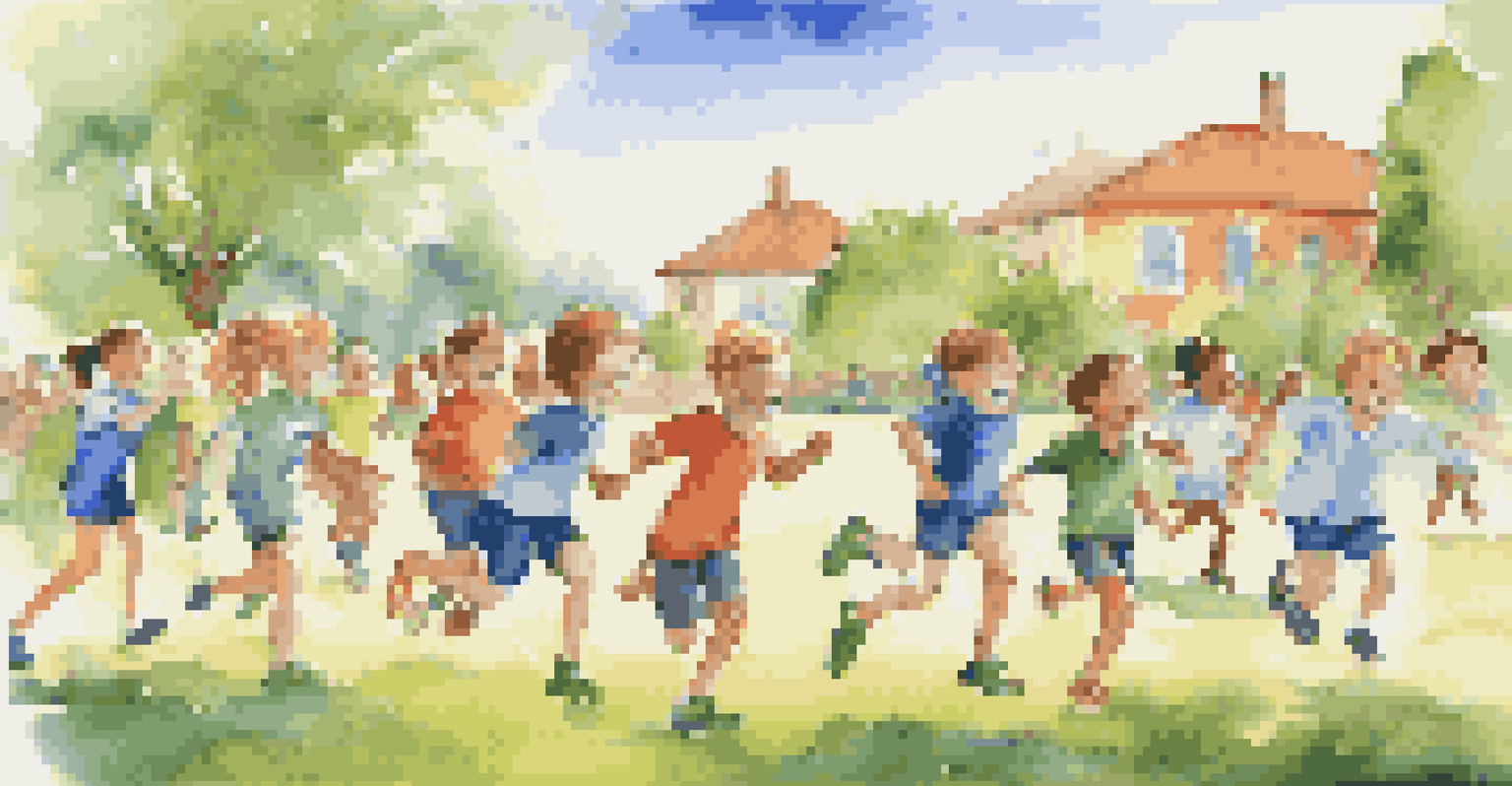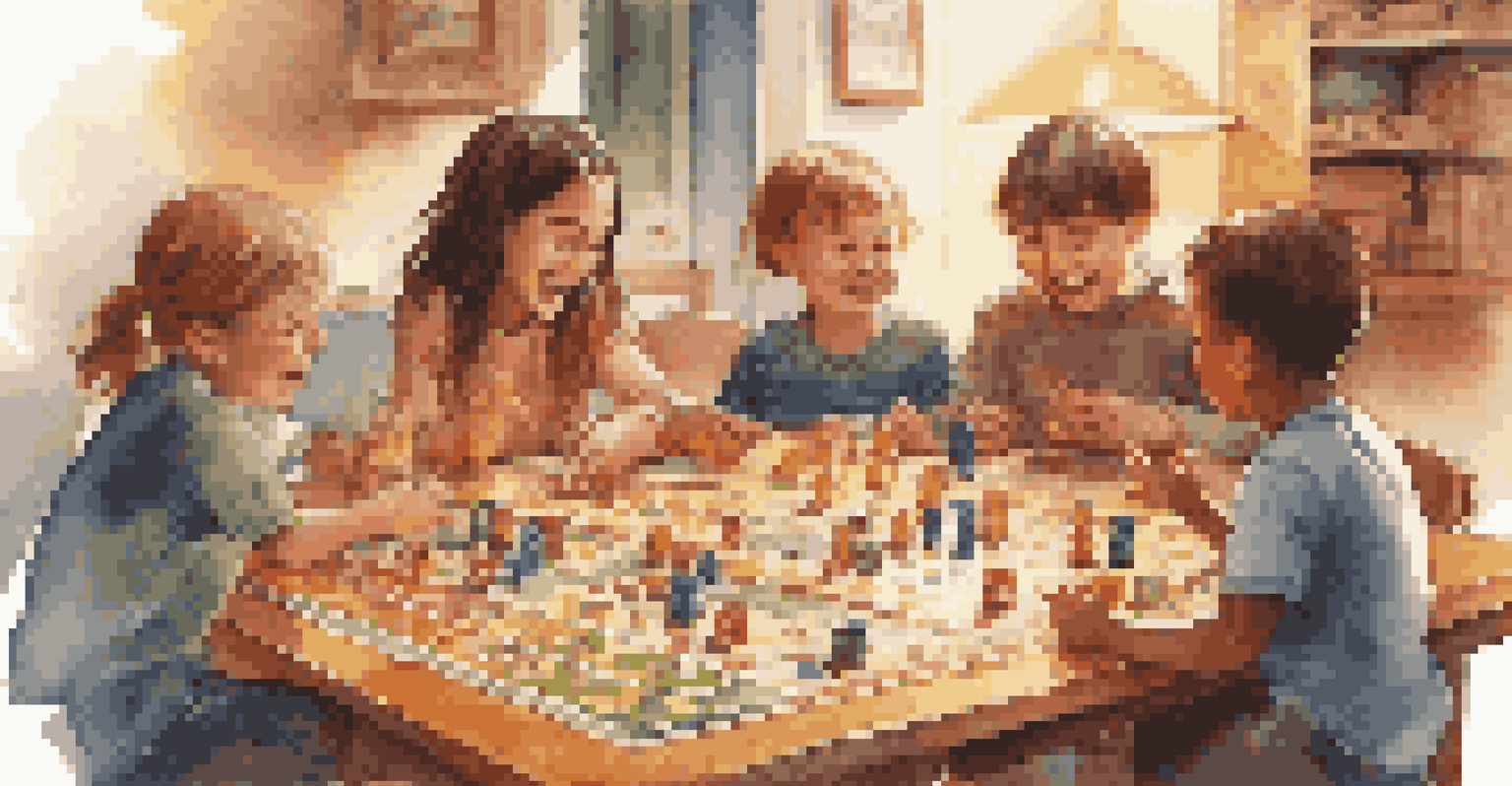Neuroscience of Play: How Playful Learning Enhances Retention

Understanding the Neuroscience Behind Playful Learning
Neuroscience reveals that play is more than just fun; it's a powerful tool for learning. When we engage in play, our brains release dopamine, a neurotransmitter linked to pleasure and motivation. This chemical response not only makes learning enjoyable but also enhances memory retention, helping us remember information more effectively.
Play is the highest form of research.
Moreover, playful learning activates various brain regions, promoting creativity and problem-solving skills. For instance, activities that involve role-playing or simulations can stimulate higher-order thinking, making complex concepts easier to grasp. Essentially, play acts as a bridge, connecting different areas of knowledge and allowing for deeper understanding.
By incorporating playful elements into learning environments, educators can tap into the brain's natural inclination towards exploration and curiosity. This not only fosters a love for learning but also encourages a growth mindset, where students feel empowered to tackle challenging subjects through play.
The Role of Emotion in Learning Through Play
Emotions play a critical role in how we learn, and play often elicits positive emotions. When learners engage in playful activities, they experience joy, excitement, and even a bit of healthy competition, all of which enhance their focus and engagement. This emotional connection creates a more meaningful learning experience, making it easier to retain information.

For example, consider a classroom where students collaborate on a game-based project. The laughter and camaraderie generated during this playful interaction not only make the experience enjoyable but also foster stronger social bonds. These connections can lead to better collaboration and communication skills, essential for lifelong learning.
Play Boosts Memory and Learning
Engaging in playful activities releases dopamine, enhancing memory retention and making learning enjoyable.
Furthermore, positive emotions associated with play can reduce anxiety and stress, creating a safe space for learners to explore and make mistakes. This level of comfort encourages risk-taking and innovation, key components of effective learning and retention.
How Playful Learning Enhances Memory Retention
Memory retention is significantly improved through playful learning techniques. When learners are actively engaged in play, they are more likely to absorb and recall information. This dynamic interaction helps create strong neural pathways in the brain, which are essential for long-term memory storage.
The more that you read, the more things you will know. The more that you learn, the more places you'll go.
Consider the 'learning by doing' approach, where students manipulate objects or participate in simulations. This hands-on experience not only makes concepts tangible but also reinforces learning through repetition and practice. The more senses involved in the learning process, the stronger the memory.
Research supports the idea that playful learning can lead to better retention rates compared to traditional methods. For instance, a study may show that students who learn through interactive games remember material longer than those who learn through lectures, highlighting the effectiveness of play in education.
Different Types of Playful Learning Activities
Playful learning can take many forms, catering to various learning styles and preferences. From role-playing and simulations to games and creative arts, the options are virtually endless. Each type of activity offers unique benefits, engaging learners in ways that traditional methods often cannot.
For example, board games can teach strategic thinking and problem-solving skills, while digital games can provide instant feedback and rewards. Alternatively, outdoor activities may promote teamwork and physical engagement, reinforcing concepts in a fun, dynamic setting. The key is to choose the right activities that align with learning objectives.
Emotions Enhance Learning Experience
Positive emotions during play foster focus and engagement, leading to a more meaningful and effective learning experience.
By diversifying playful learning activities, educators can create inclusive environments that accommodate different learners. This variety not only keeps students interested but also helps them discover their strengths and preferences, fostering a more personalized learning journey.
The Impact of Playful Learning on Social Skills
Playful learning is not just about academic growth; it also significantly impacts social skills. Through collaborative play, students learn to communicate effectively, resolve conflicts, and work as a team. These interactions are essential for developing emotional intelligence and interpersonal skills, which are critical in both personal and professional contexts.
For instance, group projects that involve play can help students practice negotiation and compromise while building relationships with peers. The shared experience of play fosters a sense of belonging and community, encouraging learners to support each other and share ideas.
Moreover, these social interactions during playful learning can lead to increased empathy and understanding. By stepping into different roles or perspectives, students can relate better to their peers, cultivating a more inclusive and supportive learning environment.
Challenges in Implementing Playful Learning
Despite its benefits, implementing playful learning can come with challenges. One common hurdle is the perception that play is a waste of time or less serious than traditional teaching methods. Overcoming this mindset requires educators to advocate for the value of play in fostering deeper learning and retention.
Additionally, logistical issues such as classroom space and resources can limit the use of playful learning activities. Teachers may need to get creative, finding ways to adapt existing materials or utilizing technology to facilitate play in constrained environments. It's essential to prioritize flexibility and innovation.
Play Develops Social Skills
Collaborative play helps students improve communication, teamwork, and emotional intelligence, essential for personal and professional success.
Lastly, assessing learning outcomes from playful activities can be tricky. Traditional assessment methods may not capture the nuances of learning through play, prompting educators to develop new evaluation strategies that align with playful learning objectives.
Future Trends in Playful Learning Approaches
As our understanding of neuroscience continues to evolve, so does the field of playful learning. Future trends may include the integration of technology, such as virtual reality and gamification, to create immersive learning experiences. These advancements can make learning even more engaging and personalized, catering to the unique needs of each learner.
Moreover, there is a growing emphasis on social-emotional learning (SEL) within playful learning frameworks. Educators are recognizing the importance of fostering emotional intelligence alongside academic skills, leading to more holistic approaches to education. This shift can help students navigate their feelings and build resilience in the face of challenges.

Ultimately, the future of playful learning looks promising, with endless possibilities for enhancing retention and engagement. As educators and learners embrace these innovative approaches, we can expect to see a transformation in how knowledge is acquired, retained, and applied in real-world settings.